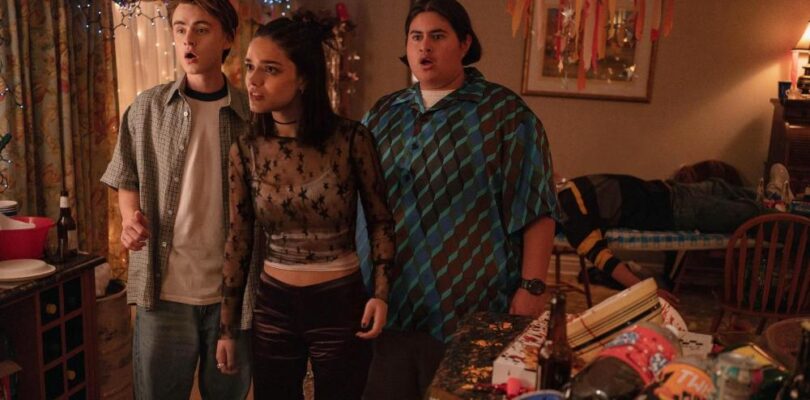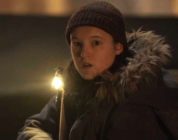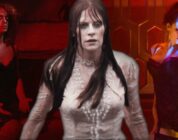In what could almost be a weird pop-cultural physics phenomenon, people keep making youth nostalgia movies that highlight a particular moment, an iconic time period that everyone who grew up in it remembers with transcendent fondness — yet the distance between the moment and the movie commemorating it keeps getting longer and longer. “American Graffiti,” the movie that invented the genre, was set in 1962 and came out 11 years later, in 1973. “Dazed and Confused” was set in 1976 and came out 17 years later, in 1993. “Adventureland” was set in 1987 and came out 22 years later, in 2009. And now we have “Y2K,” an end-of-the-millennium high-school party movie that premiered last night at SXSW. It’s set on the last day (and the day after) of 1999, and it’s coming out 25 years later. When somebody ultimately makes a youth nostalgia movie set in 2024, it probably won’t come out until 2054.
I think the reason the time between youth nostalgia movies and the periods in which they’re set keeps getting longer has to do with the escalation of media. We have more of it each decade — more screens, more images, more technology to turn everyday life into a hall-of-mirrors version of itself. (In a funny way, “Dazed and Confused,” in the three decades since it was released, has become a movie about how little technology there was in the ’70s.) We’re now living at a time so drenched in the present that it takes longer and longer for the past to feel like the past. And “Y2K,” as its title tells you, is set during a moment of apocalyptic anxiety about technology.
Popular on Variety
But it is also, very much, a late-’90s nostalgia movie, and for a while the director, former “Saturday Night Live” cast member Kyle Mooney, and his screenwriter, Evan Winter, immerse us in the time-machine headiness of that moment. The film opens on the ancient stone-cutter image of an AOL screen, with that dial-up feedback sound, the primitive email, and a video feed (of Bill Clinton) coming into view through a brief haze of pixels. “Y2K” is swimming in succulent period references and detail. A scuzzy local DVD store. A CD mixtape. The Pam and Tommy tape. Abercrombie. White kids doing their white version of freestyling. “Praise You” and “Tubthumping.” Not to mention the last fading version of that mythic figure, the video-store clerk — in this case a blissed-out druggie with hippie dreads named Garrett, played by Mooney, whose cracked performance, all “Yo!” and “wha-a-a-at?” and stoner grins, is one of the most winning things in the movie.
For a while, “Y2K” seduces us into thinking that we’re watching a kind of “Dazed in Graffiti Adventureland” for the end of the millennium. The movie starts on New Year’s Eve, and the into-the-night party plot centers on two brainy outsiders, in what feels like a deliberate nod to films from
“Superbad” to “Booksmart.” The central character, Eli, is the smooth, handsome, and relatively cool one — it almost feels like a quirky period reference that Jaeden Martell, who plays him, looks like a missing Culkin brother. Danny, his buddy since seventh grade, is the mouthy and roly-poly one, and Julian Dennison plays him like an even more kinetic version of Jonah Hill’s Seth in “Superbad” (Hill, in fact, is one of the producers here). These two hang around, making comic hay out of their whiplash fusion of bravado and self-doubt, and then they get ready to go to a New Year’s Eve house party at the suburban home of a douchebag named “Soccer” Chris (played by the Australian rapper The Kid Laroi).
There’s a mission connected to the party. Eli has a crush on Laura (Rachel Zegler), who’s that figure that spans all eras and all nostalgia: the popular girl. Exactly not the sort of person a kid like Eli is supposed to be able to get with. Yet eras evolve. Laura isn’t a mean girl with prom-queen dreams; that’s the outdated model. Like Eli, she’s into the new computer culture, which is becoming a form of cool. And the two have become flirtatious friends. The New Year’s Eve party presents a unique opportunity: the moment — namely, midnight — when you might just be able to kiss the person you’re standing next to. Danny is intent on making sure that Eli finds that moment with Laura.
All very trad and, in a way, very so-what. Mooney, in the first movie he has directed (after co-writing and starring in 2017’s “Brigsby Bear”), does a good job of staging the party — the drunken hip-hop vibe, the warring niches, the brazenness of the hook-ups and come-ons. We know we’ve been there before, but are glad enough to go on the 1999 version of this ride.
But then the ride stops. Midnight arrives. The Y2K moment. The lights go out and quickly turn back on. But something has happened.
“Y2K,” it turns out, is not a nostalgic teen-party movie. It’s a satirical sci-fi disaster comedy in which all the fears about Y2K have, in fact, come true. In that fateful clock-turning moment, all the technology really does break down…only to reassemble itself and come back to life. “Y2K” turns out to be an attack-of-the-machines movie. Yet it’s still very much a period-piece high-school comedy. So how well do the two go together?
In my book, not very well. Actually, let me refine that. It’s not that the two parts of the movie don’t go together. It’s that the last hour of it, the cheeky dystopian alien-tech horror farce, simply isn’t very good.
In “Y2K,” the Y2K apocalypse starts off on a note of slasher grisliness. At the party, the machines, following their momentary blackout, return to life as killer instruments. We see the kids skewered and slaughtered by a microwave, a blender, a power saw. For a while I thought we’d entered “Shaun of the Dead” territory — and though the blood-spattering quickly settles down, “Y2K” does indeed morph into a kind of zombie movie. At the house, the components of the appliances and the chunks of digital wiring forge themselves into a hulking robot, with a glitchy computer screen as its face, and this lurching Terminator is both a killer and the soul of the new machine age. They are taking over! And they want to kill us all.
Yet once Eli, Laura, and two of the other kids escape, wandering through the woods and the empty streets (where they observe, from a hill, a cityscape dotted with fire), the film descends into that listless anecdotal vibe that drives me nuts in so many zombie movies (where the undead are the only thing really alive in them). Out on their own, the characters are revealed to be not all that much fun. The movie lags. Yet Garrett the stoner pops up, and so does Fred Durst, playing himself. The former beastie boy of Limp Bizkit now looks like a middle-aged ringleader of the Jan. 6 insurrection, but when he finally put on his iconic red hat, the SXSW audience went crazy.
In the abstract, the concept behind “Y2K” is very 1999. The film’s big idea is that this was the moment when we all passed through the digital looking glass, becoming more like machines ourselves as we plugged into the Internet and the computers that brought it to us. And so the film’s monster machines are projections of ourselves. Or something. But there’s another way to look at “Y2K.” Maybe what the movie really captures about 1999 is that it marked a second key transition — the kicking into high gear of the era that never met an overwrought fantasy concept it couldn’t milk.




